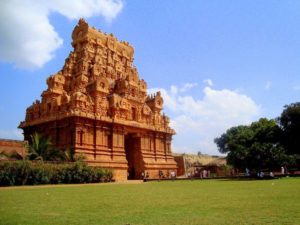World 🢖 Asia 🢖 India 🢖 Maharashtra
Buddhist shrines 🢔 Religious architecture 🢔 Archaeological wonders 🢔 Categories of wonders
Wonder
Panhale Kaji (Panhale Kazi)
 In short
In short
Nobody is able to grasp the immense universe of Indian cultural heritage. This was proven again in 1970 when Panhale Kaji (often called Panhale Kazi) cave temples were discovered.
 43.8%
43.8%
GPS coordinates
Location, address
Alternate names
Age
Religion
Map of the site
If you see this after your page is loaded completely, leafletJS files are missing.
 In detail
In detail
More than 100 years have passed since scientific research of Indian rock-cut temples started, hundreds of these monuments were described in numerous books but – out of nothing appeared unknown complex of 28 – 29 caves filled with exquisite art values!
By the way – this was not the last discovery – forgotten Indian cave temples are rediscovered up to this day.
History in short
Creation of these caves started approximately in the 3rd century AD, at a time when influential merchants were spreading the teaching of Buddha in India. Many large temples appeared near ancient trade routes. Panhale Kaji was one of such temple complexes, located at the busy route from inland to Dabhol – one of the most important port cities in the Arabian Sea in these times. Dabhol has been marked even in maps of Ptolemy.
Later, around the 10th – 11th century AD caves became a stronghold of a small group of followers to the Vajrayana sect (Tantric Buddhism). Some of the earlier caves, for example, Cave 10, were adjusted for the worship of deities like Akshobhya and Mahachandaroshana. An interesting monument of art is five Budha sculptures, possibly representing Vajrasana Buddha – showing relatedness to the iconography of late Ellora Buddhist Caves.
During the 13th century caves were taken over by Naths, a Hindu cult, adding artwork characteristic for their religion. Then, during the late Silahara period, these caves were used for Ganapatya and Shiva worship.
Description of caves
Nowadays Panhale Kaji caves represent exquisite monument of ancient art – both regarding architecture, art and the quality of craftmanship. Among other values caves contain also few inscriptions – one inscription in Brahmi script and one in Devanagari script. Some of most interesting caves are described below:
- Cave 2 – ceiling in hall has imitation of wooden beams. Rear wall contains seven small carvings of Mānusi Buddhas.
- Cave 5 – contains relief of Buddhist stupa from the 3rd century AD.
- Cave 10 contains image of Maha-Chandraroshana – this is significant feature as it tells about contacts of Konkana with Ratnagiri – a Buddhist site in Odisha, where this deity is shown on stupa.
- Cave 14 – earlier Buddhist cave with large forecourt. Sometimes around the 13th century it was transformed for worship of deities of Naths. Front wall is adorned with sculpted panels of Nath siddhas – transcendent masters. Contain also representation of Chauranginatha with several feet and hands.
- Cave 19 – contains monolithic linga-shrine inside the hall. Entrance in shrine is guarded by dvarapalas. Ceiling panels in this cave show scenes from Ramayana and Mahabharata.
- Cave 21 contains sculpture of Ganesh.
- Cave 22 contains damaged statue of goddess Sarasvati.
- Cave 29 (known as Gaura-Lena, Gaur Lene) – earlier Buddhist cave transformed for the worship of deities of Natha-pantha. Contains composite panels with images of Matsyendranatha, Adinatha and Uma as well as sculpted panels depicting Goraknatha and Maha-Tripurasundari – the latter according to Lalitasahasranama. Inside the cave there are depicted 84 siddhas in small panels. One panel shows Chauranginatha with several feet and hands. Opposite the entrance of cave there are some more sculptures – Ganesha flanked by Lakshmi and Sarasvati. Outside the cave there are also two large niches with sculptures of Hanuman and Bhairava. In the front of cave a sculptural group – cow and calf.
Unusual element in this complex is large boulder in river – it also has been carved with four imitations of doors.
References
- Indian Archaeology, 1981 – 82 – a review, New Delhi, 1982.
 Linked articles
Linked articles

Wonders of India
India is the seventh-largest country in the world by area, and, naturally, such a large area contains a huge amount of exciting attractions…
Wondermondo considers that India is the second richest center of architectural heritage in the world after Europe and maybe no single country in the world can match it in this respect.

Buddhist shrines
Buddhism is one of the world religions and at the same time is a spiritual philosophy with diverse traditions, beliefs, and practices. There exists a rich tradition of architecture expressed in Buddhist temples and monasteries.

Hindu shrines
Hinduism is one of the oldest religions – possibly the oldest one among contemporary religions and Hindu temples belong to the most impressive religious buildings in the world.
 Recommended books
Recommended books
India Unveiled: Spirit, Tradition, People
This is the one book you need to understand the spirit of India. Internationally acclaimed as the best book of its type on India, this sixth expanded, revised edition of the multi-award-winning book India Unveiled: Spirit, Tradition, People by Robert Arnett truly reveals the diversity and sacredness of the oldest continuously living civilization on earth.
India: A Sacred Geography
A spiritual history of the world’s most religiously complex and diverse society, from one of Harvard’s most respected scholars.


